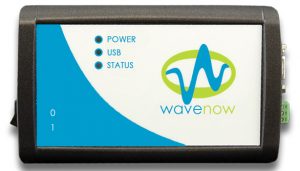
What is in a name? The word wave evokes stimulating visions of rushing water, powerful energy, and sheer beauty. A wave can also refer to a new social or technology trend. To a scientist, a wave might bring back memories from physics, learning about electromagnetic waves or understanding trigonometric functions. At Pine Research Instrumentation, a wave means all that and more.
You may have noticed that Pine Research Instrumentation products have the word wave in their title, but this was not always the case. When Pine Instrument Company first offered scientific research instrumentation in the 1960s, their products were named based on their manufacturing part numbers, including memorable names like the AFCBP1 and RDE5 bipotentiostats. Naming products with part numbers is convenient for manufacturing reasons but likely less memorable or meaningful to users. When Pine Instrument Company refocused their electrochemical instrumentation division in 2005, forming Pine Research Instrumentation, they also chose to name their products differently. Inspired by the wave the newly reorganized Pine Research Instrumentation set out to develop high-quality and research grade instrumentation to support the growing interest in electrochemical research. The first product released with the new naming style was the small yet powerful WaveNow Potentiostat/Galvanostat system in 2008.

The physical size was also a major factor in developing the WaveNow. A quick poll of principal investigators (PI) revealed that one of the most valuable commodities in their research laboratory was space. A successful PI with numerous research grants, a sizable team of researchers, and plenty of instrumentation expressed concern over having sufficient space for their team to conduct research. With a small form factor, the WaveNow design addressed space concerns by having a footprint of only 165×100×29 mm. The WaveNow design allowed labs to integrate electrochemical instrumentation into an already cramped benchtop, freeing up space to integrate additional products such as a UV-Vis spectrometer for spectroelectrochemistry.
Pine Research Instrumentation continued to tailor the WaveNow to the needs of the researcher by developing a series of WaveNow potentiostats including the WaveNano, a low current version, and the WaveNowxv, with an extended voltage range. Today the WaveNow can now be found in laboratories around the world.
As technology rapidly increased, curiosity in electrochemical phenomena also grew. The resurgence of electrochemistry in the last two decades demanded potentiostats with higher voltage and current limits, and deeper software integration with the hardware. As the image above suggests, Pine Research continues to ride the wave, subsequently releasing new products, named accordingly (hint: WaveDriver 10/20, WaveVortex 10, and Wave…).
If you haven’t already, we invite you to contact us! We enjoy hearing how our products may be helpful to you and products you need but we do not have on our website. You can also follow us on Facebook, Twitter, YouTube, and LinkedIn. Keep an eye on our news feed for more updates and useful articles. Catch the wave with Pine Research Instrumentation!

